What information can we find on watercolor paint Labels? For beginners, understanding these details might not seem essential. However, if you wish to deepen your understanding of paint characteristics, compare different watercolor brands, or explore the unique features of various paints, learning to read paint labels is a great starting point.
Table of Contents
Watercolor Paint Names
The color names on watercolor packaging are marketing terms set by manufacturers and don’t always reflect the paint’s actual composition.
Different brands, different names: Pigments might still be identical.
Same name, different brands: Pigments could vary.
Same name, same pigment: The color’s appearance may differ due to formulation.
Some brands use names that are poetic, whimsical, or ornate, offering little insight into the actual color properties. It’s akin to a bubble tea shop with creative drink names—you might not immediately discern whether it’s green tea, black tea, or includes Bubble or jelly. 😄

Sap Green (Left) contains pigments Orange PO48, Green PG7, and Yellow PY150.
Sap Green (Right) uses pigments Blue PB29 and Yellow PY153.
What information can you find on watercolor Labels
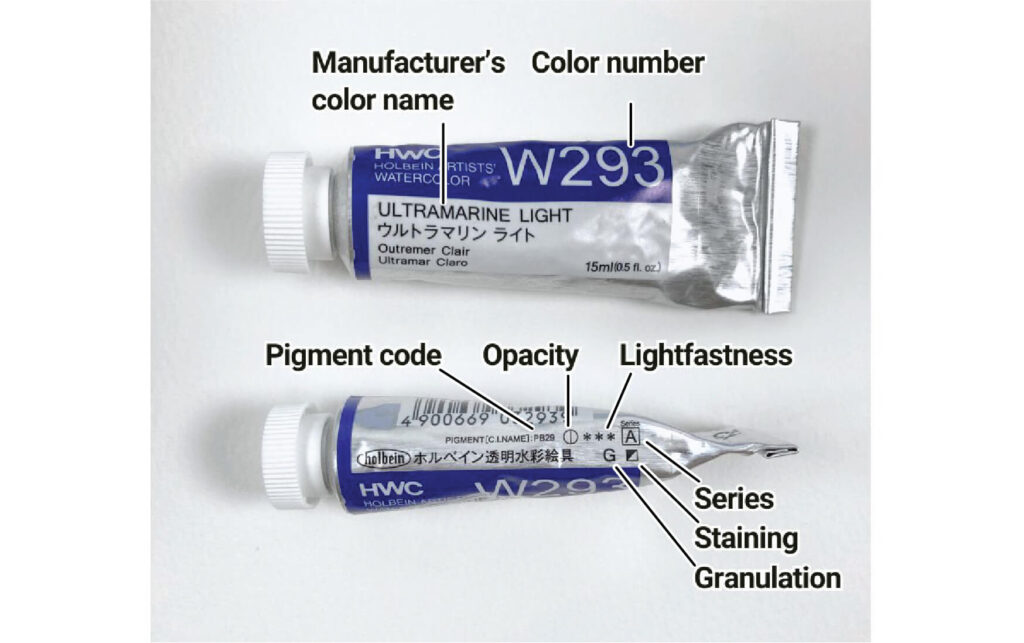
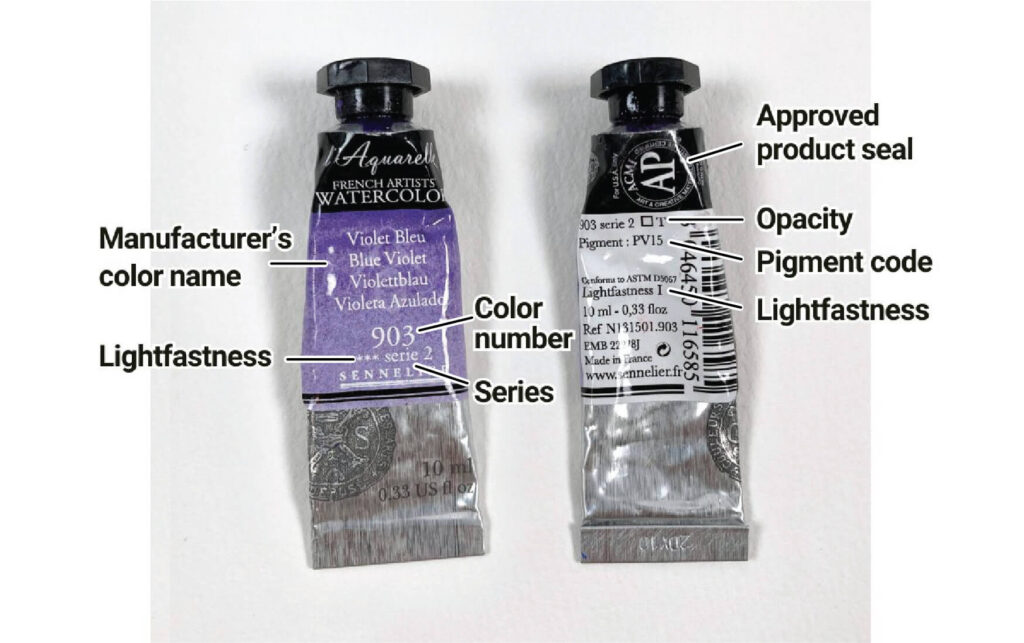
Manufacturer’s color name and number
The most prominent place on the tube shows the color’s name and number. Color names are often translated into multiple languages, and using the number is the quickest and most accurate way to reference a color in a brand’s catalog. Most brands organize their color series by numbers (1, 2, 3, 4, 5) or letters (A-F), with higher-numbered series generally being more expensive.
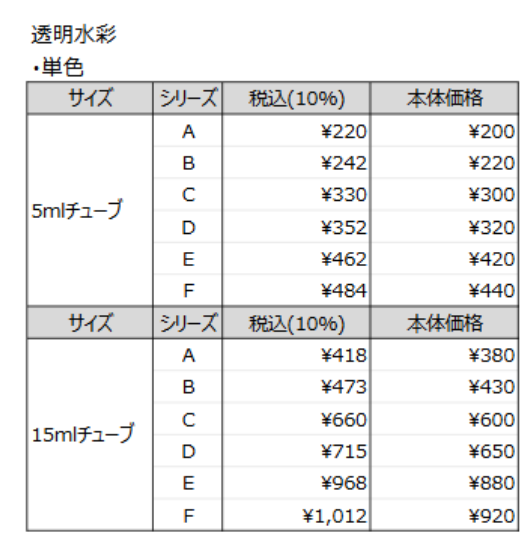
Pigment code
The pigment code system is quite simple. For example, in the code PV15, “P” stands for “Pigment,” “V” for “Violet,” and the number 15 is used for further classification. Other color codes you may see include: Y for Yellow, O for Orange, R for Red, B for Blue, G for Green, Br for Brown, Bk for Black, and W for White.
Opacity
Although we commonly refer to “transparent watercolors,” the level of transparency can vary depending on the type of pigment and the blending formula. This can range from “transparent” to “semi-transparent” and “opaque.”
Lightfastness
Lightfastness indicates how resistant a pigment is to fading over time when exposed to light. It is typically represented by a star rating. Modern watercolor pigments are generally highly durable, allowing colors to remain vibrant for extended periods. You can refer to a brand’s color chart to check the lightfastness ratings for individual paint.
Staining property
Pigments are typically categorized as low, medium, or high staining, indicating how strongly they adhere to the paper. Low-staining pigments are easy to lift off with scrubbing, revealing the paper underneath. In contrast, high-staining pigments cling to the surface, sometimes leaving a faint residue even after cleaning the palette.
ACMI certification
The Art & Creative Materials Institute, Inc. (ACMI)
ACMI (Art and Creative Materials Institute) is an international association comprising over 200 manufacturers of art, craft, and creative materials, promoting product safety. Certified products feature one of two labels:
- “AP” (Approved Product): Indicates that the product contains no materials harmful to children or adults.
- “CL” (Cautionary Labeling): Found only on certain adult art supplies, not for children. These products are safe if used correctly but require reviewing their ingredients and packaging. They are not suitable for children under 11 years old.

How can you find more detailed information about watercolor paints?
How can you find more detailed information about watercolor paints?
Most brands provide comprehensive color charts on their official websites, which typically include detailed information like pigment codes, transparency, lightfastness, and more. Note that the presentation of this information and the symbols used can vary between brands.
To see how the colors look in practice, you can search for the brand and color names on Google or YouTube, where many artists share unboxing, swatch tests, and reviews.
Here are links to some popular brands’ color charts:
Holbein
Daniel smith
Sennelier
Schmincke AKADEMIE
Schmincke
Shinhan
Winsornewton Cotman
Winsornewton
Van gogh
Rembrandt
Whitenights
MaimeriBlu
What do terms like “Hue” or “Permanent” mean on watercolor labels?
Hue: Refers to a color created using a different pigment or formula than the original.
Here are some reasons:
Substitute for fading pigments
Certain colors, like Alizarin Crimson, tend to fade over time. Manufacturers develop similar hues with improved durability, keeping the original name but adding “Permanent.” For example, Daniel Smith’s Alizarin Crimson (prone to fading) was replaced with Permanent Alizarin Crimson, composed of three pigments for better lightfastness and similar tone—essentially an upgraded version!
Cost reduction
For example, Cadmium Yellow Hue or Cadmium Orange Hue. Cadmium pigments are costly, so manufacturers often create alternatives using substitute materials. This is especially common in student-grade paints, where “Hue” means a “replica.”
Note: There are environmental and safety concerns surrounding cadmium. While standards vary by country, many brands have recently developed cadmium-free paints to address these concerns.
Environmental concerns
Manganese Blue, a true manganese blue, was discontinued due to environmental concerns and toxic side effects. In response, brands have developed similar alternative shades, like Manganese Blue Hue, to replicate the color while avoiding the harmful impacts of the original pigment.
These pigments can be great substitutes for the original colors, but they may come with potential issues regarding quality and lightfastness.
You can read more articles about watercolor supplies:
The Complete Guide to Watercolor Brushes
How to Keep Watercolor Paper from Drying Too Fast: 5 Tips
How to Use Graphite Watercolor: ArtGraf’s Unique Medium

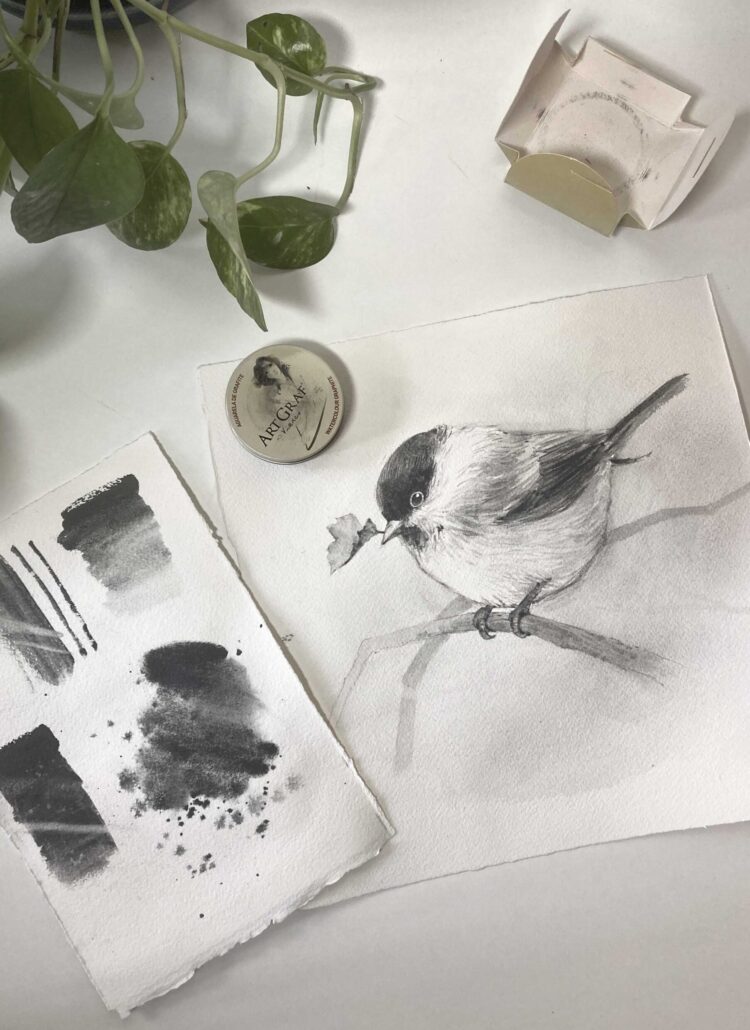
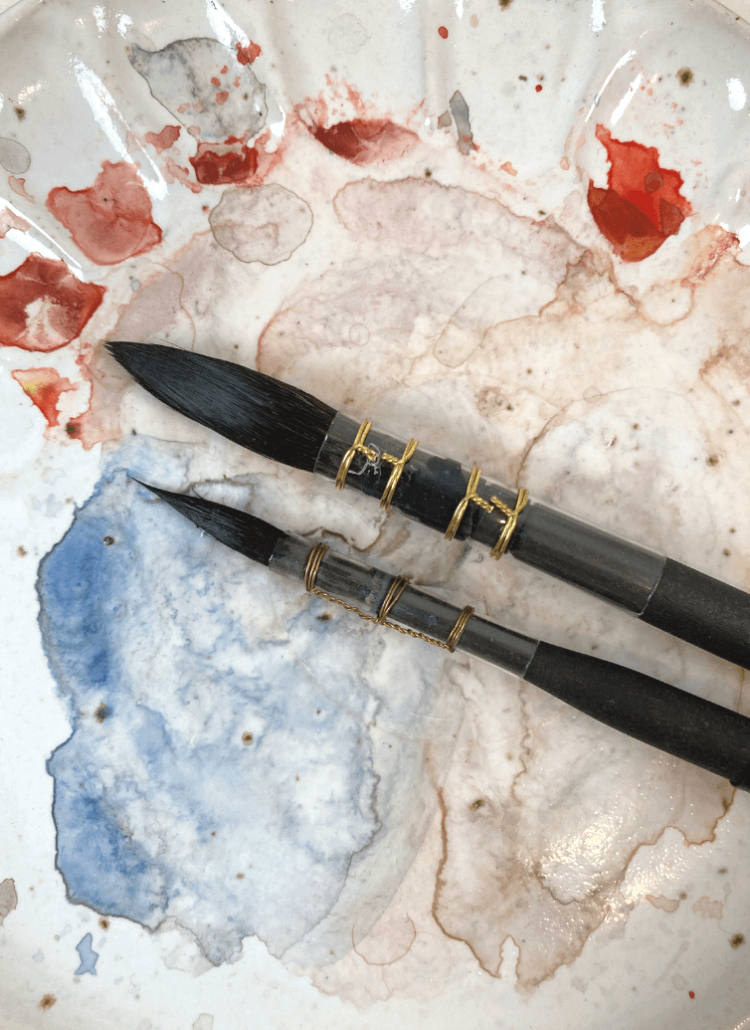
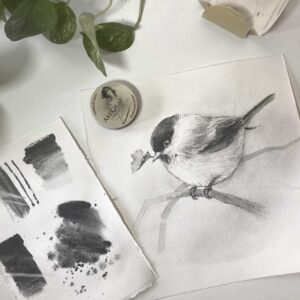
Leave a Reply